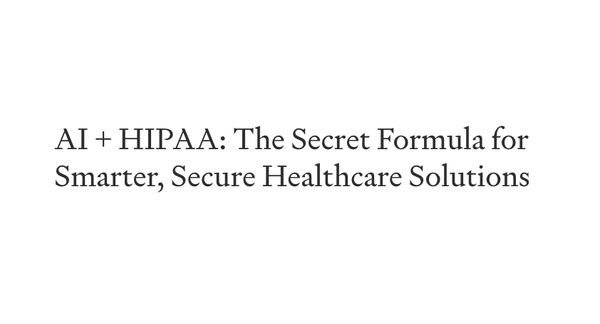Embracing Patient-Centric Values: The Evolution to Value-Based Care Models
Table of Content
The healthcare sector is currently undergoing a significant shift - from a traditional fee-for-service model to a more patient-centered approach known as Value-Based Care (VBC). This innovative model focuses on patient outcomes and cost efficiency, rather than the volume of services provided.
What is Value-Based Care?
Value-Based Care models prioritize the health outcomes of patients. Under this model, healthcare providers are rewarded for the quality of care they provide, rather than the quantity. Healthcare IT systems play a vital role in supporting these models by providing data analytics and performance metrics that aid in the delivery of high-quality, efficient care.
The Rules of Value-Based Care in Healthcare
The core rules of Value-Based Care revolve around accountability, transparency, and patient engagement. Healthcare providers are held accountable for the health outcomes of their patients.
Transparency is ensured through the sharing of information between patients and providers, fostering a collaborative environment. Patient engagement is also crucial, as patients are encouraged to take an active role in their own healthcare management.
Benefits of Value-Based Care
Value-Based Care models offer numerous benefits. Primarily, they improve patient outcomes by emphasizing high-quality, personalized care. Because providers are rewarded for positive health outcomes, they are incentivized to spend more time with their patients, understand their unique health needs, and develop comprehensive, individualized care plans.
Moreover, Value-Based Care models promote cost efficiency. By focusing on prevention and effective management of chronic conditions, they help reduce unnecessary hospital admissions and readmissions, thus saving healthcare costs.
Advantages of Value-Based Care
One major advantage of Value-Based Care models is the enhanced patient experience. Patients receive more attentive, personalized care, leading to increased patient satisfaction.
Additionally, these models help reduce healthcare disparities, as they incentivize providers to improve care for all patients, regardless of their backgrounds or circumstances.
In conclusion, Value-Based Care models represent a significant step forward in healthcare. By focusing on patient outcomes and cost efficiency, they promise to improve the quality of care and the patient experience, while also addressing long-standing issues of healthcare cost and accessibility.
Healthcare IT systems and Value-based Care
Healthcare IT systems are instrumental in supporting Value-Based Care (VBC) models by providing the necessary data analytics and performance metrics. These systems can track and analyze a vast array of patient data, from health outcomes and treatment effectiveness to patient satisfaction levels.
This data-driven approach allows healthcare providers to measure the quality of their care, identify areas for improvement, and adjust their strategies accordingly to optimize patient outcomes and cost efficiency.
Additionally, these systems make it possible to share data among different healthcare providers, ensuring coordinated and integrated care that is aligned with the principles of VBC models.
Final Thought
In conclusion, the shift towards Value-Based Care models is a transformative step in healthcare, with significant implications for patient outcomes, cost efficiency, and overall patient experience.
The role of Healthcare IT systems in this shift cannot be overstated. They provide the necessary foundation for tracking, analyzing, and sharing patient data, enabling healthcare providers to deliver high-quality, efficient care. The future of healthcare lies in leveraging these advancements to achieve better health outcomes for all.














